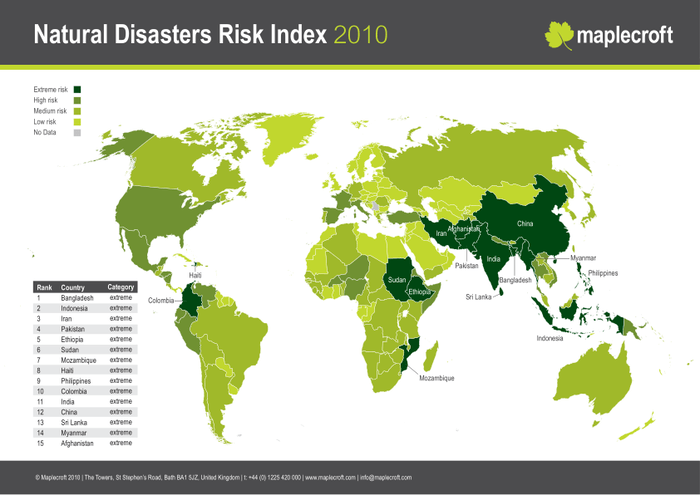A new study by Maplecroft ranks 229 countries based on their vulnerability to natural disasters, with Bangladesh, Indonesia, and Iran identified as the most at risk. The Natural Disasters Risk Index (NDRI) assesses human impact from disasters—deaths per year and event frequency over 30 years—covering various incidents like earthquakes and storms. Fifteen countries, including Pakistan and Ethiopia, are categorized as “extreme risk.”
Poverty, poor infrastructure, and overcrowding exacerbate vulnerability. Bangladesh has suffered 191,637 disaster-related deaths, primarily from storms, while Indonesia’s casualties largely stemmed from the 2004 tsunami. Iran faces seismic threats, accounting for significant fatalities. India and China also report heavy losses due to diverse disaster types.
The report emphasizes that climate change may increase such events, urging even wealthy nations to enhance disaster risk reduction. Among G8 countries, France and Italy are notably high-risk in Europe. In contrast, the UK is considered “low risk.” The NDRI leverages data from multiple reputable sources to analyze global disaster risks.
Source link


